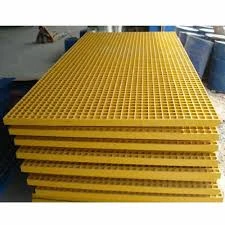loading...
- No. 9, Xingyuan South Street, Dongwaihuan Road, Zaoqiang County, Hengshui, Hebei, China
- admin@zjcomposites.com
- +86 15097380338
- Welcome to visit our website!
frp c channel
Understanding FRP C Channels A Versatile Solution for Modern Construction
Fiber Reinforced Polymer (FRP) C channels are gaining recognition in the construction and engineering industries due to their remarkable properties and versatility. This innovative material combines high strength, low weight, and excellent corrosion resistance, making it an ideal choice for various applications. In this article, we delve into the characteristics, applications, and advantages of FRP C channels.
What are FRP C Channels?
FRP C channels are structural elements made from fiber reinforced polymer, which incorporates composite materials, primarily glass or carbon fibers, within a polymer matrix. This combination results in a product that is not only lightweight but also exhibits significant strength. The “C” shape of these channels provides structural support akin to traditional steel or aluminum channels but with the added benefits of FRP technology.
Properties of FRP C Channels
1. Lightweight One of the most significant advantages of FRP C channels is their light weight, which simplifies handling and installation. This quality can lead to reduced labor costs and lower transportation fees.
2. Strength and Durability Despite their lightweight nature, FRP C channels possess a high strength-to-weight ratio. They can bear substantial loads without deforming, making them suitable for various structural applications. Furthermore, they are resistant to impact and fatigue.
3. Corrosion Resistance FRP materials are inherently resistant to corrosive elements such as moisture, chemicals, and salts. This property makes FRP C channels particularly valuable in harsh environments like coastal areas or chemical processing plants where traditional materials would deteriorate.
4. Thermal and Electrical Insulation Unlike metal channels, FRP does not conduct electricity, which can be a significant safety advantage in certain applications. Additionally, FRP exhibits excellent thermal insulation properties.
5. Versatility in Design FRP C channels can be customized to meet specific project requirements, making them a flexible option for engineers and architects. They can be manufactured in various sizes, lengths, and resin types to suit particular conditions and specifications.
frp c channel

Applications of FRP C Channels
FRP C channels find a broad range of applications across different industries
1. Construction In the construction industry, FRP C channels are used for framing, support structures, and reinforcements. Their lightweight nature facilitates easier handling and installation, especially in large-scale projects.
2. Marine The marine industry benefits immensely from FRP C channels due to their corrosion resistance and lightweight properties. They are used in docks, piers, and boat building where traditional metals would be prone to corrosion from seawater.
3. Infrastructure FRP C channels are utilized in infrastructures such as bridges, walkways, and railings, where both strength and resistance to environmental factors are crucial. Their longevity reduces the need for frequent repairs and maintenance.
4. Transportation In transportation applications, including railway systems and roadways, FRP C channels offer durable solutions that enhance safety and reduce the weight of vehicles, contributing to fuel efficiency.
5. Chemical Processing The chemical industry uses FRP C channels in environments where exposure to harsh chemicals can degrade traditional materials. Their chemical resistance ensures longevity and operational safety.
Conclusion
FRP C channels represent a significant advancement in materials technology, offering robust solutions for a variety of applications. Their unique combination of lightweight, strength, corrosion resistance, and versatility makes them ideal candidates for modern construction and engineering challenges. As industries continue to evolve and innovate, FRP C channels will likely play an increasingly vital role in shaping the future of infrastructure and construction. Incorporating these materials can lead to enhanced performance, reduced maintenance, and longer-lasting structures, embodying the very essence of progress in engineering solutions.
-
The Rise of FRP Profiles: Strong, Lightweight, and Built to LastNewsJul.14,2025
-
SMC Panel Tanks: A Modern Water Storage Solution for All EnvironmentsNewsJul.14,2025
-
GRP Grating: A Modern Solution for Safe and Durable Access SystemsNewsJul.14,2025
-
Galvanized Steel Water Tanks: Durable, Reliable, and Ready for UseNewsJul.14,2025
-
FRP Mini Mesh Grating: The Safer, Smarter Flooring SolutionNewsJul.14,2025
-
Exploring FRP Vessels: Durable Solutions for Modern Fluid HandlingNewsJul.14,2025
-
GRP Structures: The Future of Lightweight, High-Performance EngineeringNewsJun.20,2025
